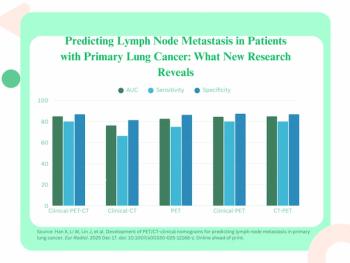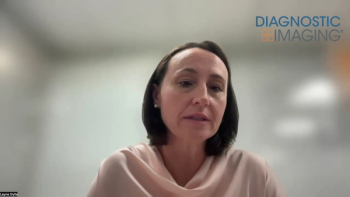
FDA Relaxes Imaging Modification Rules During COVID-19
Agency outlines modifications that will and won’t be accepted without approval during the outbreak.
Providers are relying heavily on imaging services during the COVID-19 pandemic. To make it easier for some devices to be used in caring for patients infected with the virus, the U.S. Food & Drug Administration (FDA) announced is it easing its rules on any modifications made to radiology equipment. For now, manufacturers do not need to seek agency approval before implementing these changes for patient care.
In an effort to make imaging services as readily available as possible for providers treating this patient population, many practices or facilities have already changed how they’re using devices. In the April 23
Specifically, the agency said, it did not intend to object to modifications to systems it has already cleared or approved even in situations where it would normally require a 510(k) or premarket approval application.
“In developing this policy, FDA’s intent is to help expand the availability of imaging products, including mobile and portable diagnostic imaging systems, in the United States for the duration of the public health emergency while being flexible regarding the maintenance of devices,” the agency wrote. “Wherever possible, healthcare facilities should use FDA-cleared or approved medical imaging systems and maintain this system following the manufacturer’s or other recommended maintenance schedule.”
Modifications That Won’t Pose Risks
There are modifications to imaging equipment that the FDA believed would not cause undue risk to patients:
- Expansion of clinical indication, such as expanding an extremity-only indication to other parts of the body, when other options for acquiring images aren’t available in a facility.
- Expanding the mobility, portability, or relocation of an imaging system, including the use of motors, batteries, or electrical components, that would allow a fixed imaging system to be available for mobile use.
- Additions of a barrier that is designed to protect the equipment operator or the patient.
- Design changes that facilitate cleaning, disinfecting, or sterilizing a system.
- Modifications to device components that don’t significantly degrade image quality, such as the use of solid-state detectors.
Modifications That Are Discouraged
But, not all modifications will be accepted, the agency cautioned, because they could potentially cause undue risk.
- Changes that would reduce the level of radiation shielding for patients or equipment operators.
- Modifications that would increase radiation dose to patients or that would result in insufficient image quality.
- Changes that would make cleaning, disinfecting, or sanitizing devices or elements of devices harder.
- Modifications that introduce new types or reconstruction algorithms.
Ultrasound Guidance
As the outbreak has continued, the value of imaging COVID-19-positive patients with ultrasound has become clearer. And, because the modality doesn’t emit ionizing radiation, the FDA allowed for additional flexibility with modifications to ultrasound under certain circumstances.
- Changes that allow ultrasound scanners to be used outside the environments for which they were cleared, including a general practitioner’s office or field hospital.
- Modifications that let healthcare providers who aren’t trained in sonography gather images under appropriate supervision.
- Adding lung scanning clinical applications as long as labeling based on established practice guidelines, such as those from the American Institute of Ultrasound in Medicine, is included.
- The availability of probes and machine settings suitable for lung scanning, such as probes with 3MHz frequency or higher, with linear, curvilinear, and phased-array technologies.
- Using mechanical index (MI) <1.4 as an indicator for potential biological effects on tissues containing gas bodies.
These ultrasound modifications should be avoided:
- Modifications that would lead to an increase of the derated maximum acoustic output parameters.
- Changes that would go beyond the safety limits in humans, such as MI greater than or equal to 1.4 for lung images.
- Any changes that would let lay users acquire images without proper supervision.
Software Changes
Under some circumstances, the FDA said it would allow modifications to image analysis software:
- Modifications that add more capability for lung segmentation and measurement.
- Changes that help identify non-specific findings associated with COVID-19, including ground-glass opacities on CT or Kerley B-lines on X-rays and ultrasound.
- Alterations that help analyze and monitor patients with COVID-19 and how they respond to therapy according to quantitative metrics.
However, these changes should be avoided because they increase risk to patients:
- Any changes made that would indicate the device can be used to diagnose or triage COVID-19 on its own.
- Changes that claim a product can accurately predict outcomes or treatment responses.
- Modifications intended to distinguish COVID-19 from other lung conditions.
Although the FDA has relaxed its rules surrounding modifications for the time being, the agency did strongly recommend that manufacturers document any changes made to their products. Products must also include labeling so customers can clearly understand any modifications that have been made.
Newsletter
Stay at the forefront of radiology with the Diagnostic Imaging newsletter, delivering the latest news, clinical insights, and imaging advancements for today’s radiologists.



























